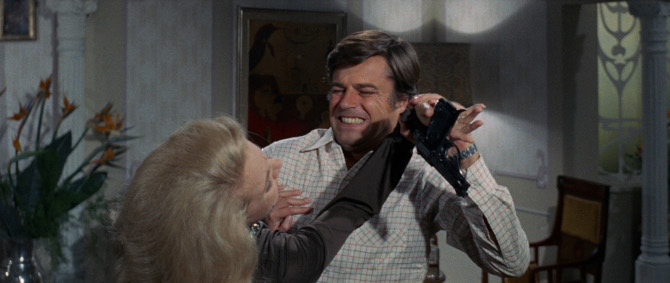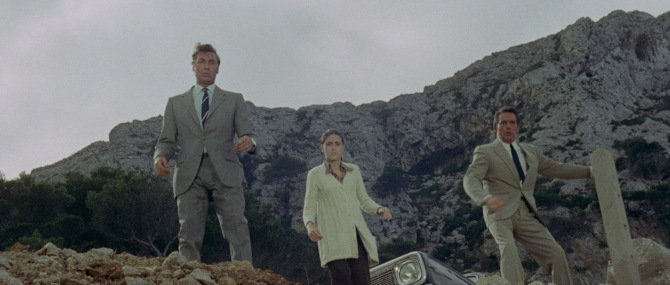Giallo fun fact of the day: did you know that by shooting pigeons, you will help quash your primordial animalistic desire to kill? Well, this bizarre fact will most definitely be put to the test in the very film it is found within. . . 1970’s A Quiet Place to Kill, directed by Umberto Lenzi and starring Carroll Baker – their third of four collaborations together.
Try to follow me here, this film can often be mistaken for another, as A Quiet Place to Kill was titled Paranoia in its native Italy (a co-production between the boot, Spain, and France) – which just so happens to be the same title (at least in the United States) as Lenzi and Baker’s 1969 effort, Orgazmo (you can probably guess why American distributors chose to rename it. . . also, don’t confuse this with the 90s American sex comedy). And, just to be different, in Spain, they decided to call it A Drug Named Helen. . . talk about playing the name game. And, just to further complicate the primary title, Lenzi directed a picture the next year – called An Ideal Place to Kill. . . it seems like Lenzi was making so many gialli that he was running out of titles for them.
Opening with credits featuring a background done to look like stylized negative film (that hides some of the main plot points that will occur), we are then introduced to Helen (Baker), a famous trailblazer of a race car driver. . . a bit like a 70s blonde version of Danica Patrick. Getting in a serious accident, she miraculously survives, but is under strict orders from her doctor. She is not to drink, smoke, race, or be under any stress at all – basically, she should be watching paint dry for the foreseeable future.
Leaving the hospital, she receives a letter from who she thinks is her ex-husband (that she has not seen for three years), Maurice Sauvage (Jean Sorel – Belle De Jour), inviting her to stay at his posh seaside mansion. . . in fact, it is sent by his second wife (though she doesn’t know anything about her yet). . . no matter who the letter came from, I’m not sure if this sounds like a perfect, stress-free scenario. In any case, she arrives, meeting her wealthy replacement, Constance (Anna Proclemer), and a number of their jet-setting friends, including amateur camera man Dr. Harry Webb (Alberto Dalbés). Constance also has a daughter who is away at boarding school, who will soon be surprising everyone with a pop in visit, Susan (Marina Coffa).
Living a life of sailing, fast cars, near constant shindigs, hunting (including the almighty pigeon), lounging by the pool, and frequent philandering, it is a world outside of the ordinary. In fact, nearly everyone seems to be in love with Helen, including both ex-husband and his new wife. Yet, in this world, nothing is what it seems, and everything has some sort of caveat or an ulterior motive. Could it be Maurice or Constance that is plotting something sordid. . . or might it be both of them? Is there a reason that a doctor is always carrying around a video camera? How will a teenage daughter’s unexpected arrival change the power dynamics in the house?
A slow burner that builds up its characters and setting before introducing the suspenseful thrills, Lenzi shades all of his main players in a slightly unlikeable, barred light. In fact, it is quite clear that everyone’s got a scheme, a slick manoeuver to gain power, control, or some extra money along the way. Putting the audience on its guard, it is less of a whodunit and more of a who’s-gonna-get-away-with-it. . . could it be one, or many (or perhaps none at all). Leading to a twisty, if slightly predictable conclusion – at least to people who watch these types of movies, whether you guess it or not, you can’t say it isn’t entertaining.
An engaging crime mystery drama with the typical Lenzi flair, A Quiet Place to Kill is a worthwhile film to add to your giallo list. With a fantastic setting, double-dealing personas, and stunning visuals, there’s a little bit of everything for mystery lovers. So, come sail away to this picturesque Italian villa, there will be plenty of intrigue to trawl through.
Can be watched in either Italian with English subtitles, or dubbed English




